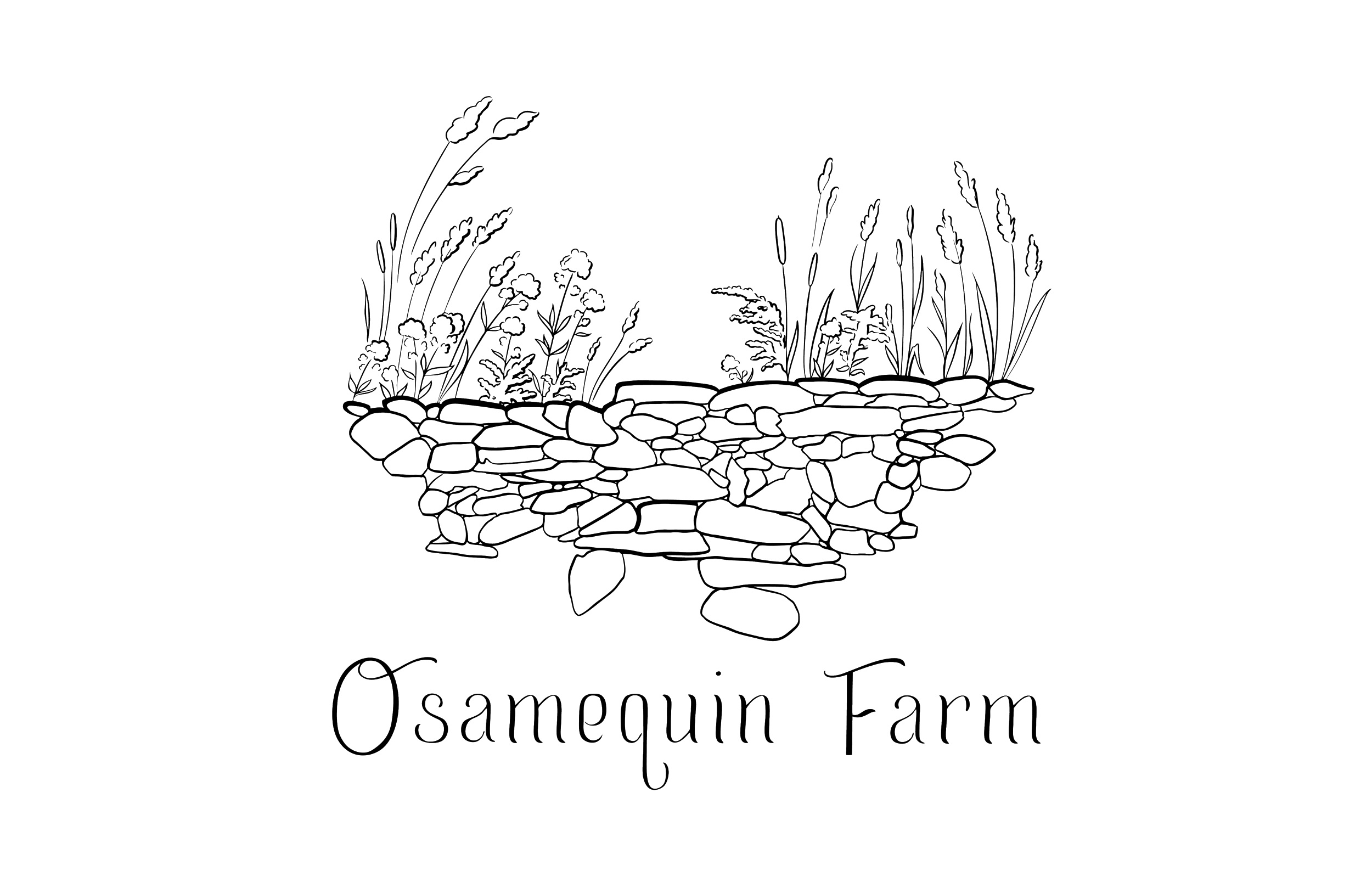landscaping for the organisms and the climate
Part of our work as land stewards at Osamequin Farm is to provide habitat and sustenance for the (as Beth of Outer Spaces wrote) “billions of organisms who rely on these plants for food, water, shelter, climate control, etc etc etc, and who further propagate the plants.”
You can see ecological landscaping at work in our entryway garden - the garden bed along the stone wall as you turn onto Walnut Street, and around our Osamequin Farm sign.
Beth of Outer Spaces Ecological Landscaping, one of our Resident Farmers, has been meticulously cultivating these spaces with a watchful eye on which organisms are showing up to feast, to nest, to overwinter, to shelter, and to flourish!
When Beth first became the steward of this garden, it was mostly daffodils, day lilies, and poison ivy growing along the rock wall. Beth has since introduced dozens of native species, adding diversity, beauty, and ecosystem health to the garden.
Some of the plant species you will find in the Outer Spaces garden:
Virginia bluebells – Marginal wood fern – Sensitive fern – Wild strawberry – self-heal, Prunella vulgaris – White avens – Heart-leaved Alexanders – Rosy sedge – Path rush – Skull cap – Lobelia – Willow herb – New York iron weed – Swamp milkweed – Buttonbush – Blue mist flower
These plants help support local pollinators and wildlife. The scattered quality of the plant spacing mimics a natural, wild environment and provides habitat for helpful critters. Fallen leaves from the surrounding oak and hickory trees become useful mulch, feeding the soil, retaining moisture, and keeping weeds at bay. Dead stalks from last season's growth become nesting habitat for bees and other creatures, and seed heads provide food for birds throughout the winter. The garden is an example of a diverse community of plants going through a constant process of change and rebirth.
Tiny bee-flies (Bombylius species) pollinate the wild strawberry flowers (Fragaria virginiana).
Monarch chrysalis on stem of white avens (Geum canadense), a wildflower that we’ve kept and allowed to spread in the garden, along with self-heal (Prunella vulgaris), whose brown seedheads are in the background. Both plants are ground-covering natives that can compete with weeds. After they’ve bloomed, their stems and leaves always provides crucial habitat, as demonstrated here.
Spotted salamanders (Ambystoma maculata) find food (worms, slugs, snails, spiders, beetles, etc) and shelter from predators in the leaf litter and wood chips.
Milkweed tussock moth caterpillars (Euchates egle) on swamp milkweed (Asclepias incarnata), in front of blue lobelia (Lobelia siphilitica). They only feed on milkweed species.





